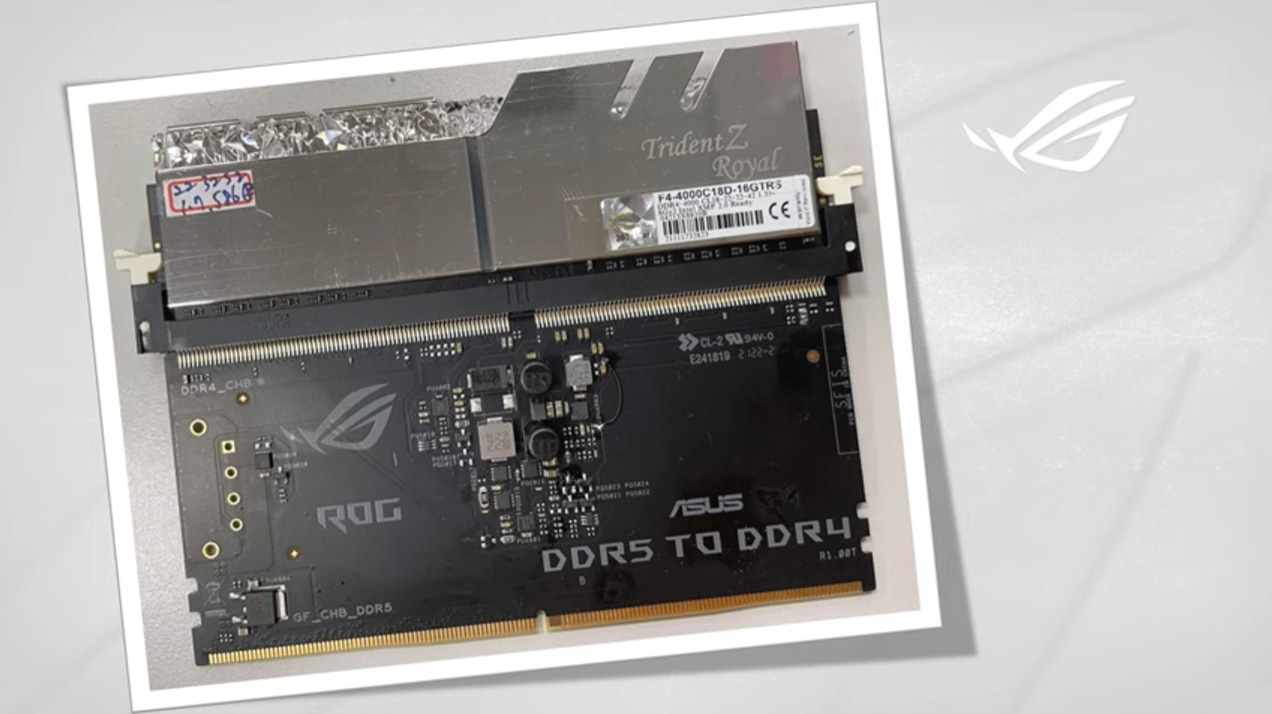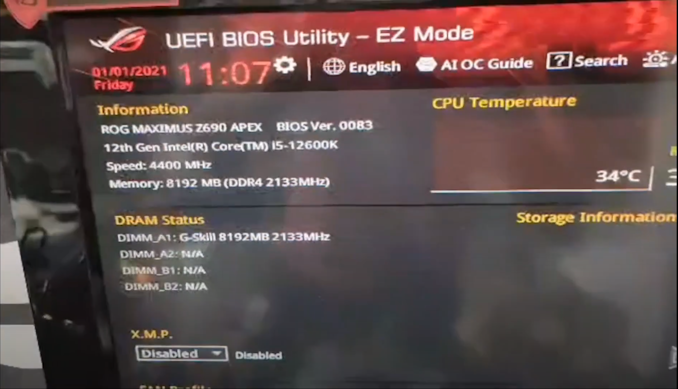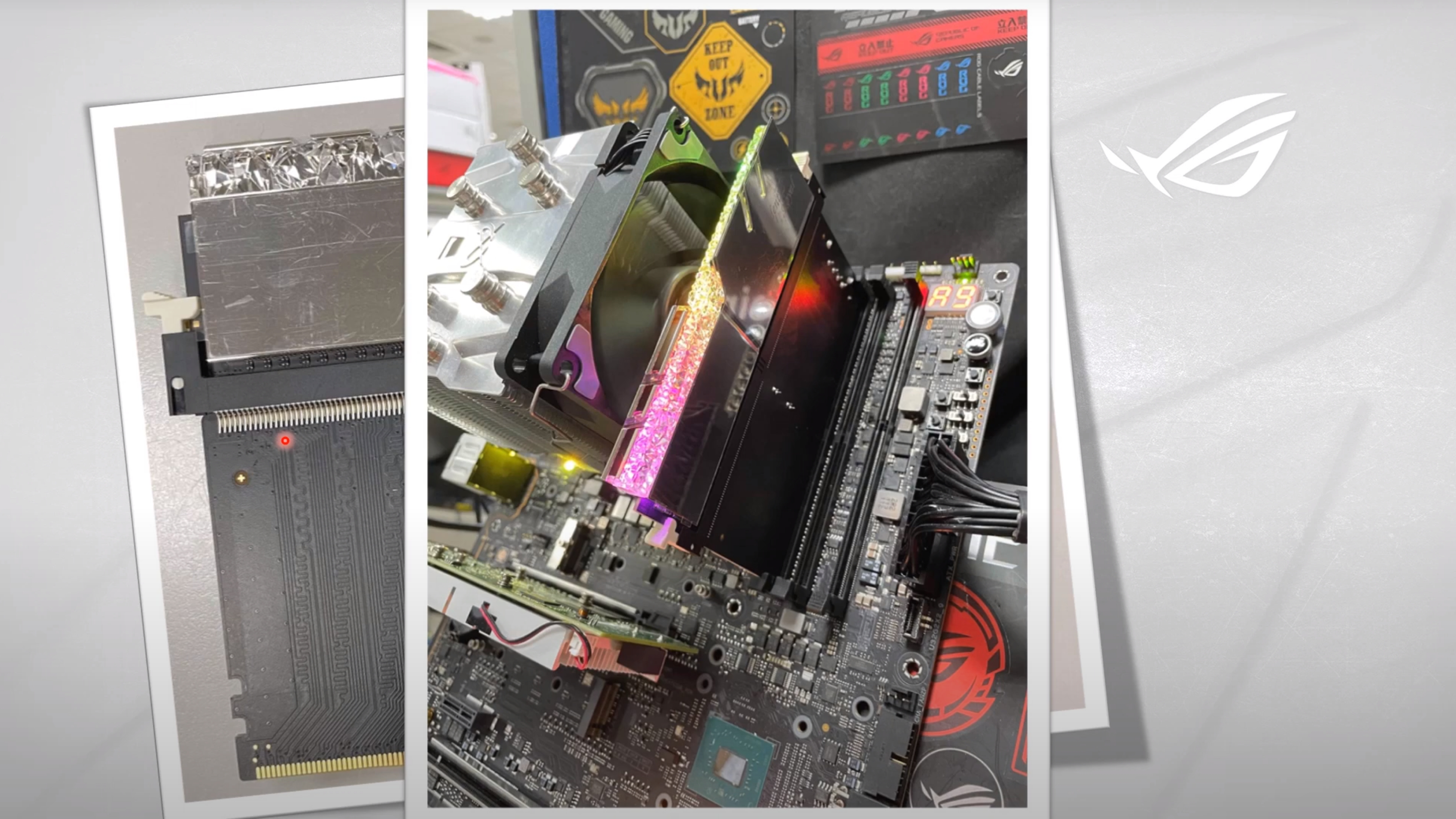Asus develops a DDR4 to DDR5 adapter card
Impressive engineering for sure, but is it useful?

Intel’s Alder Lake CPUs and Z690 motherboards brought DDR5 memory to the desktop for the first time. The problem is that DDR5 supply has been severely impacted due to shortages of key components. Though there are Z690 boards that support DDR4, they are mostly low to mid-range options. If you must have a high end DDR5 system, and don’t want to pay scalper prices, it would be simple to just wait a couple of months before upgrading, by which time the supply of DDR5 memory should have stabilized a little. But, there’s another potential option.

Best CPU for gaming: the top chips from Intel and AMD
Best graphics card: your perfect pixel-pusher awaits
Best SSD for gaming: get into the game ahead of the rest
Asus is working on a DDR4 to DDR5 add-in card. How’s that for a skunk works project? Asus has shown in the past that it's capable of some hefty engineering feats, including the co-development of double capacity RAM modules, but developing a DDR4 to DDR5 adapter with all of the challenges that entails is pretty extreme!
A Youtuber by the name of Bing (via Anandtech) posted a video (in Mandarin) that explains the concept and shows off a prototype in action. The idea is simple. Take a stick of DDR4 memory, place it onto the converter card, and insert it into a motherboard’s DDR5 slot. However, if the idea is simple, in an engineering sense, it’s far more complicated. While the Alder Lake memory controller supports both DDR4 and DDR5, the modules are fundamentally different in terms of architecture and power supply. The latter is a key roadblock as a DDR5 motherboard lacks the ability to manage the power supply of a DDR4 module, so this would have to be done via the converter.

Could this kind of solution benefit hardcore overclockers? The high latency of DDR5 doesn’t suit some benchmarks and so the ability to use DDR4 memory in a high-end board could see it get limited interest. but then there are other issues such as very long memory trace lengths, which means that even if everything else works perfectly, it will never be able to reach the same maxed out clocks and timings as a DDR4 motherboard.
The converter is very tall, so it’s likely to interfere with air coolers. In its current state, the converter can only accept one module, so you’d need to run two for dual channel. Running the device would require extensive BIOS modifications, since Asus’ Maximus boards all use DDR5, it would require a lot of engineering hours to properly implement.

Despite being an impressive feat of engineering, I’m struggling to see how this can make it to retail. A mainstream user could just opt for a DDR4 motherboard, or if you must have DDR5, you could just wait it out, or grab a basic 2x8GB 4800 kit to tide you over. it’s hard to imagine the Asus converter would sell for cheap, especially if you need to buy at least two. I’d be inclined to lean towards this being a pet project by an enterprising engineer. It’s quite a feat and I’m very intrigued by it, but I believe it’s ultimately of little use to 99% of the wider market.
The biggest gaming news, reviews and hardware deals
Keep up to date with the most important stories and the best deals, as picked by the PC Gamer team.

Chris' gaming experiences go back to the mid-nineties when he conned his parents into buying an 'educational PC' that was conveniently overpowered to play Doom and Tie Fighter. He developed a love of extreme overclocking that destroyed his savings despite the cheaper hardware on offer via his job at a PC store. To afford more LN2 he began moonlighting as a reviewer for VR-Zone before jumping the fence to work for MSI Australia. Since then, he's gone back to journalism, enthusiastically reviewing the latest and greatest components for PC & Tech Authority, PC Powerplay and currently Australian Personal Computer magazine and PC Gamer. Chris still puts far too many hours into Borderlands 3, always striving to become a more efficient killer.

